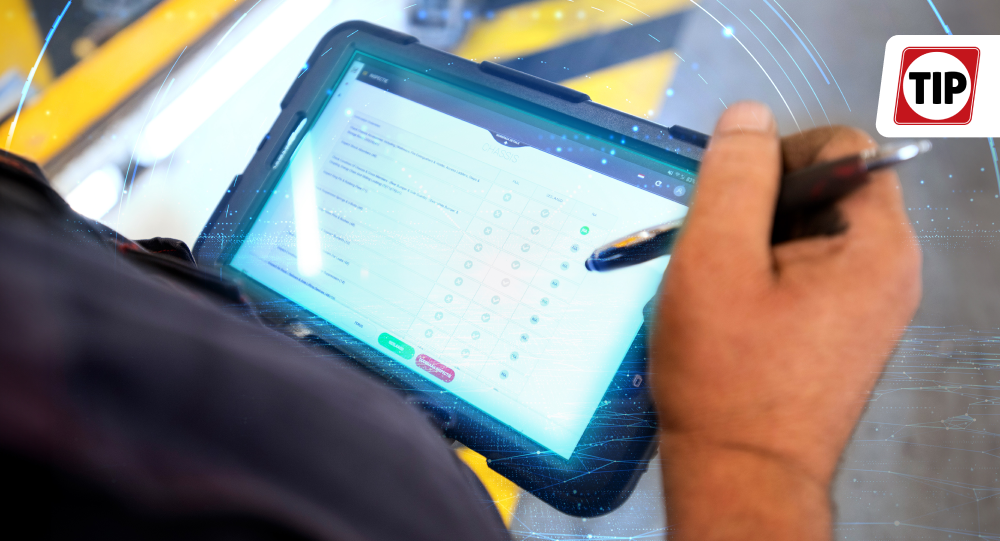All you should know about e-maintenance
With the ever-rising need for safety, energy efficiency, and quality in the transportation industry, having a well-functioning fleet is fundamental.
Good and regular maintenance guarantees the good conditions and longevity of vehicles, no matter the vehicle type. One quick and accurate way to upkeep vehicles is through e-maintenance, which uses digital technologies and connectivity for the care and monitoring of assets.

As the transportation industry shifts towards electric vehicles (EVs), e-maintenance has become increasingly important. With the unique components and systems in EVs, traditional maintenance methods are no longer sufficient.
In this article, we will present the key features of e-maintenance, its benefits and challenges. We also explore its application in EVs and how it contributes to their efficient maintenance and operation.
E-maintenance: key features
- Remote monitoring and real-time data: through remote monitoring data is collected from the vehicle and transmitted to a remote location for analysis. Furthermore, the systems in place can provide information in real-time.
- Predictive maintenance: By analyzing the data, e-maintenance can predict when a problem is likely to occur, making it possible to adopt preventative measures.
- Internet of Things (IoT) integration: E-maintenance can be combined with IoT devices, such as sensors and cameras, to provide even more data on a truck or car’s performance. This can further improve the accuracy of predictive maintenance.
- Data analysis algorithms are used by e-maintenance systems to extract valuable insights from the data collected.
- Integration: E-maintenance systems can be linked to other systems, such as GPS and telematics, to provide a more comprehensive view of the vehicle.

Benefits and challenges of implementing e-maintenance in the fleet
E-maintenance offers several benefits to fleet operators, trucks manufacturers and maintenance personnel. It allows for more proactive maintenance due to real-time monitoring, which can enable early detection of potential issues to avoid breakdowns. Consequently, downtime will be reduced, and operational risks will be minimized. In addition, addressing maintenance issues before they become severe can prevent costly repairs, thus, reduce overall maintenance expenditure, while increasing vehicles’ lifespan.
However, there are also downsides to e-maintenance that must be considered. Implementing e-maintenance systems requires significant technical expertise and resources. The initial investment in e-maintenance systems can be substantial, while ongoing maintenance and upgrades can add more to the cost. Moreover, there are currently no widely accepted standards for e-maintenance systems, which can make it difficult for businesses to compare and choose among different options.
E-maintenance in electric vehicles (EVs): focusing on electrified components
With the use of e-maintenance, EVs’ operations can be optimized as it provides remote monitoring of the battery's charge level, temperature, and state of health. By doing this, more accurate prediction of the equipment’ lifetime will be made so operators can schedule maintenance accordingly. Balancing the charging of the battery is also important to ensure its longevity, and digital monitoring helps keep the battery not over- or under-charged, which could have led to reduced battery performance or even vehicles breakdowns.
To successfully implement e-maintenance, there are several criteria that operators need to take into consideration:
- The high voltage batteries used in EVs require specialized knowledge and training to work on, so businesses need to hire certified technicians or train their employees. Additionally, high voltage batteries require two people to work on them at all times, which can be challenging for businesses with limited staffing. With these specific conditions for human resources, operational costs might rise.
- Separate work areas are necessary for EV maintenance and repair due to its specialized equipment and procedures, which again, can be costly for businesses with limited space or resources.
EV solutions at TIP
At TIP, our range of electric vehicles is complemented by comprehensive end-to-end solutions. These offerings include not only the vehicles themselves but also encompass e-maintenance services designed to address our customers’ needs.
With 55 years of experience in the transportation field, TIP possesses the right knowledge and tools to assist you with your EV needs and their e-maintenance. Our extensive experience and commitment to providing high-quality services have enabled us to keep your EVs running smoothly.
To explore our EV fleet services, please click here.
Contact us today to learn more about how we can support you with electric vehicle maintenance and repair.






